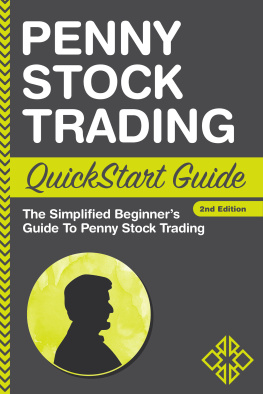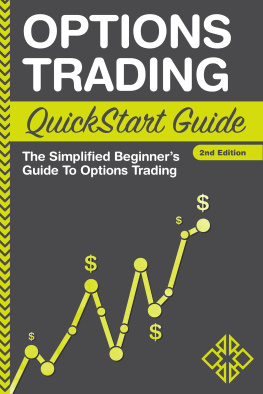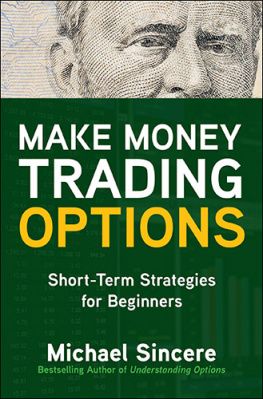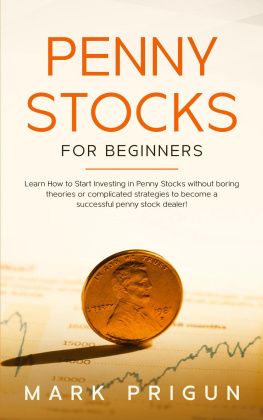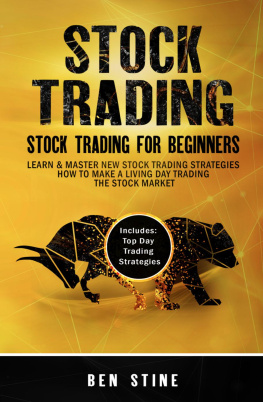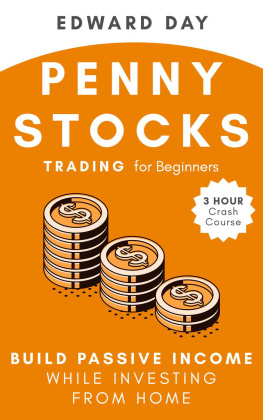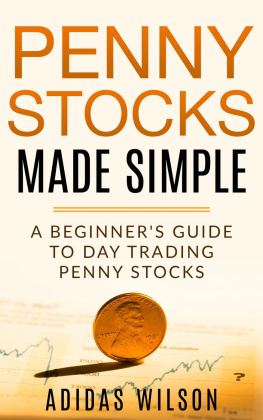Contents
Landmarks

Visit: www.clydebankmedia.com/investing-campus
Contents
Terms displayed in bold italic can be found defined in the glossary

BEFORE YOU START READING,
DOWNLOAD YOUR FREE DIGITAL ASSETS!
Visit the URL below to access your free Digital Asset files that are included with the purchase of this book.

DOWNLOAD YOURS HERE:
www.clydebankmedia.com/pennystocks-assets
Introduction
Penny stocks operate in a universe in which few things are certain, but the payoff potential is huge. They exist in a sparsely regulated, volatile section of the market, so consumers (investors) must always be on the lookout for frauds and hucksters. Nonetheless, gems are hidden within the chaos. If youre willing to do the research and take the risks, then you could realize substantial gains.
If youve elected to read this book, no doubt youre curious about the often confusing world of penny stocks. You dont want to lose your proverbial shirt, even though the word penny makes this investing venture seem less risky than most. In addition, penny stocks have gained a poor reputation in some investing circles, largely because its easy to make mistakes when youre choosing where to invest.
Weve designed this quick start guide to help you avoid the most common mistakes beginning penny stock investors make and to teach you specifics such as proper trading strategies, how to trade risk-free, and most of all how to spot those companies that will grow and add to your profits. Its a great feeling when you succeed, especially when you can watch your small investment grow to something more substantial.
| 1 | Stocks 101
Perhaps youre brand new to the world of investing. Maybe youve chosen to read this guide because penny stocks seemed like a fairly inexpensive way to stick your toe in the investment waters, so to speak. But how much do you really know about the stock market in general?
We tend to throw around the terms stock and stock market quite freely, but do you really know what these two terms mean? Perhaps you learned about them in a college or high school economics class, or maybe your parents invested in the stock market and you remember hearing them talk about their gains and losses. However, its important that the details in your head be a little more complete before you go stampeding into the penny stock world.
What is a Stock?
Quite simply put, a stock is a piece of a company, albeit a very small piece in most cases. When a company chooses to be a public company, it issues shares of stock for purchase by the general public. The more stocks or pieces you purchase, the more of the company you own.
As one of the co-owners of the company, often along with thousands or even millions of others, you are entitled to a portion of that companys profits. If the company does well, your stock goes up in price and you make money. You may reap this money in the form of dividends, which are sums of money paid out to investors on a regular basis (usually quarterly).
Note : some companies do not pay dividends, even when they are doing well, preferring to reinvest the profits back into the business in order to earn more in the future with the promise of even higher dividends ahead.
If the company in which you are investing experiences losses, you take a loss on your investment, too. In this case, the dividends you receive are lower or, in some cases, you dont receive any at all.
This is why you may hear about the risk involved in playing the stock market. Even investing in reputable companies represents a risk if something happens to affect the company negatively. Its often a guessing game, as youll see later, when we begin to discuss penny stocks. This is why investing in the stock market is often referred to as speculation, a word that literally means forming a theory without firm evidence.
Types of Stock
There are two basic types of stock common and preferred.
- Common Stock
Most often offered to the general public. When you buy common shares of stock, you own a piece of the company and are entitled to dividends or a piece of the profit. For each share you own, you get one vote in the election that determines board members, who are the individuals who oversee any decisions made by management. Common stock can be a very good investment but does indeed carry risk due to bankruptcies, liquidations, mergers, etc.
- Preferred Stocks
Generally provide investors with a fixed dividend for as long as you own the stock. This is unlike common stocks, for which the dividends undoubtedly vary. If a company liquidates, preferred stockholders are paid off before common stock holders, which presents an obvious advantage. However, preferred stock holders usually do not have the same voting rights as common stock holders.
Why Do Companies Sell Stock?
A company sells stock when it needs to raise money. It can also do this by borrowing funds from a bank or other source. However, if its owners choose to sell stock, there are no repayment plans to be faced in the future.
There are a few different ways to sell stock. If a companys owners want to control who is offered a piece of the pie, they sell stock through private placement, which allows management to choose to whom the stock is offered. Chances are that if youve purchased stock or plan to do so in the future, youve done so through a public offering. Companies initiate public offerings, as was noted, in order to raise money. They may need money for a variety of reasons, including expansion or any other kind of further growth, or to pay back owners or investors who had a hand in getting the company started.
Companies institute an initial public offering (IPO), which is the first offering of stock, but can also continue later with a secondary public offering if they need to raise more capital.
A company whose stock is performing well is usually considered a solid company and tends to have an easier time raising money through lenders as well, besides through the sale of stock.
The Stock Market
The Stock Market is the place where stocks and bonds are traded (bought and sold). Simply put, a stock market links buyers and sellers, facilitating the exchange of securities between these two groups of investors.
A Stock Market can be a physical place where face-to-face trading happens, such as the big Stock Exchange in New York City, or more likely a virtual location, a network where trades are made electronically.
There are two parts to the Stock Market.
- The Primary Market
Where new issues of stock are sold through the aforementioned Initial Public Offerings or IPOs. Institutional Investors those who have extremely large dollar amounts to spend use the primary markets to purchase shares at Initial Public Offerings and are given preferential treatment due to the dollar amount they plan to purchase.
- The Secondary Market
Where the little guy makes his or her purchases. After the IPO, all subsequent trading happens on the secondary market, with offerings now available to individual purchasers like you.

